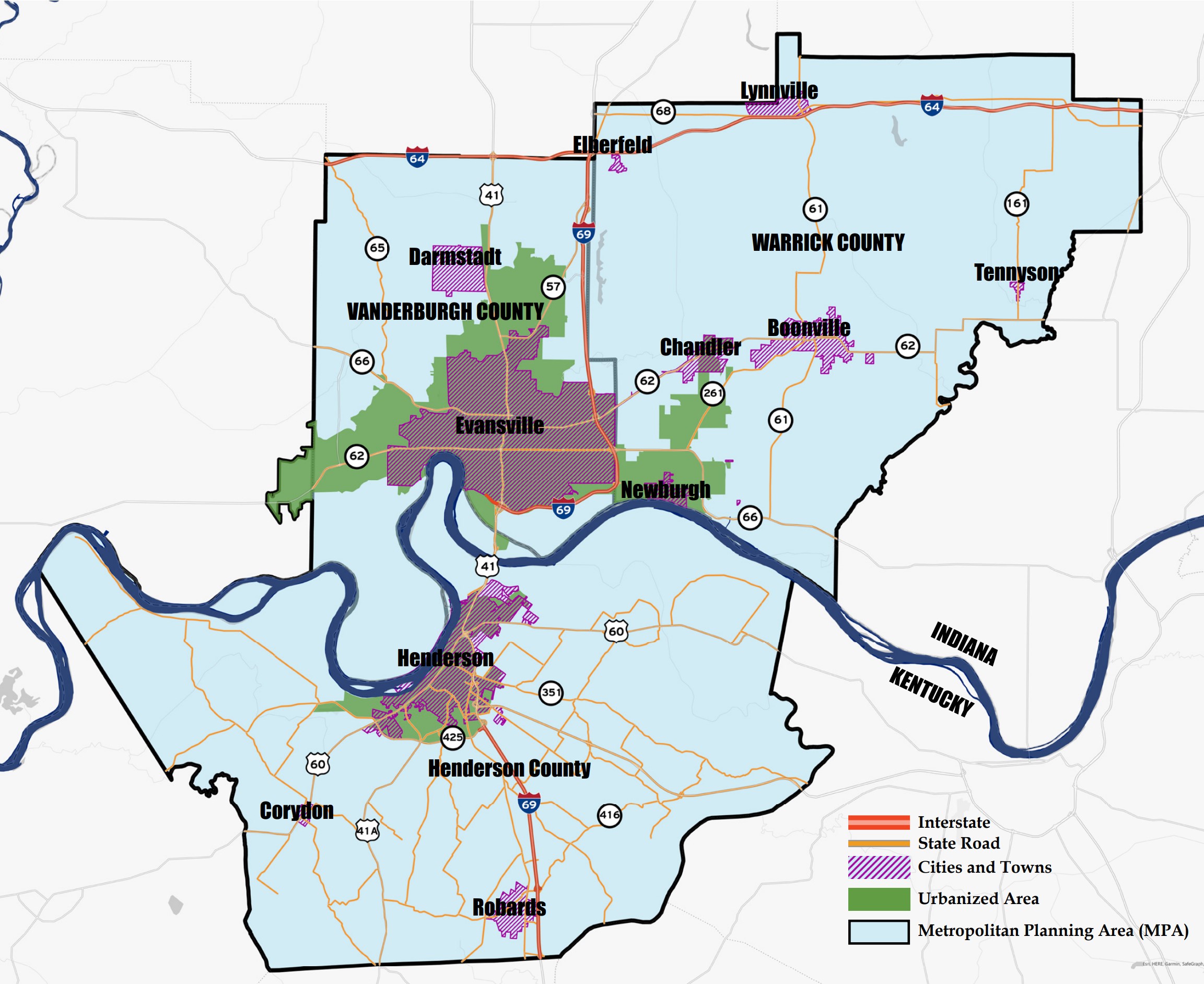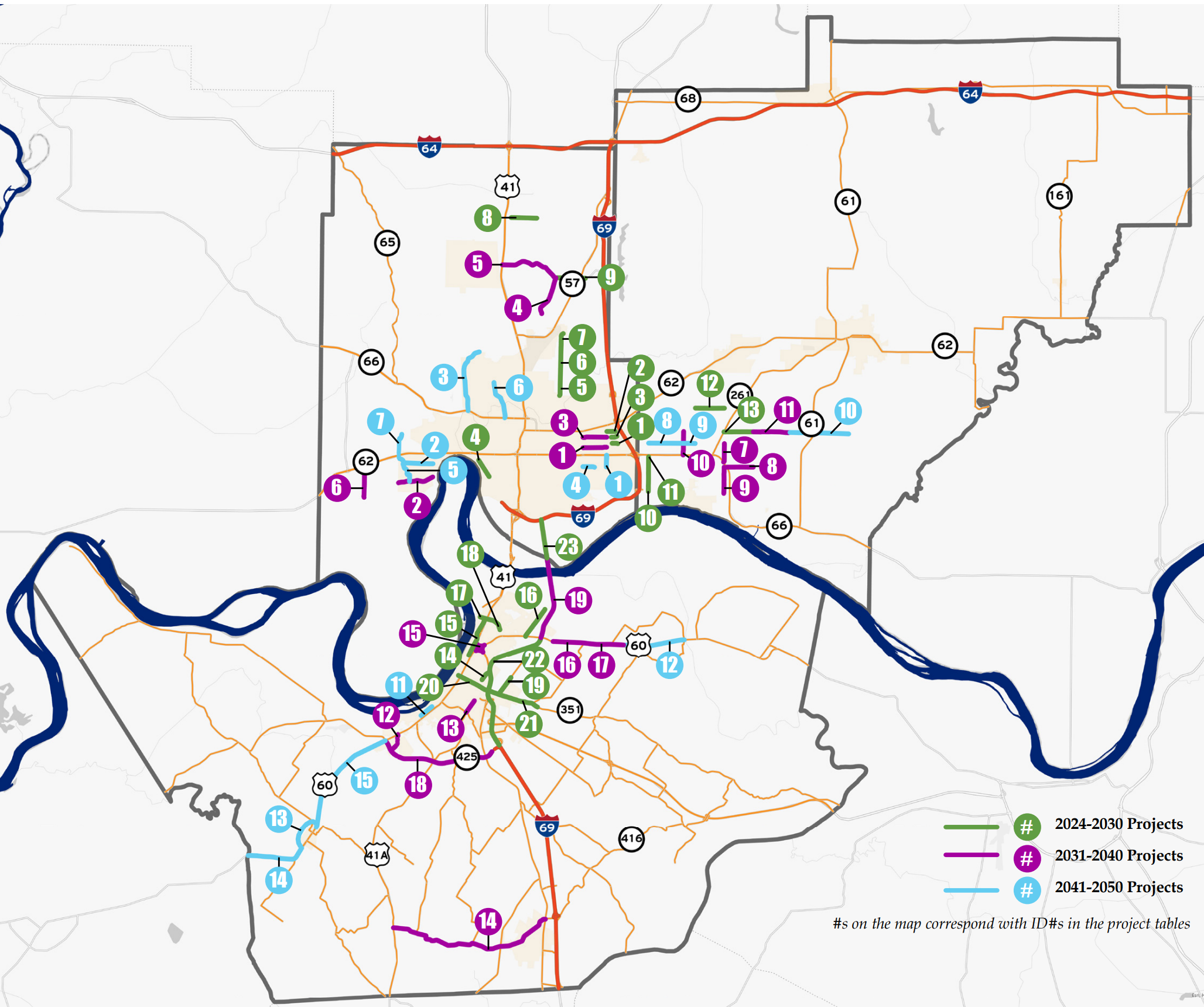About MTP 2050
As the Metropolitan Planning Organization (MPO) for the Evansville-Henderson planning area, EMPO is required to conduct a continuing, cooperative, and comprehensive transportation planning process, with a 20-year horizon, that results in producing a Metropolitan Transportation Plan (MTP) and Transportation Improvement Program for the region.
The MTP is a long range planning document that identifies transportation deficiencies, policies, strategies and projects over the next two decades. It is updated on a four-year cycle. EMPO coordinates the development of the MTP with local, state and federal partners. The MTP makes the Evansville region eligible to receive federal transportation funding to improve, maintain and operate highways, public transit, bikeways, sidewalks, and related facilities. Transportation projects must be included in the MTP to be eligible to receive federal funding within the EMPO planning area. The MTP is also required to show Conformity with the IDEM’s State Implementation Plan for mobile source greenhouse gas emissions.
Planning Jurisdiction
The EMPO Metropolitan Planning Area (MPA) contains approximately 625 square miles in Indiana, including the City of Evansville, Vanderburgh County, Warrick County, and a very small area of eastern Posey County. In Kentucky, the Study Area encompasses approximately 440 square miles which includes the City of Henderson and Henderson County. With a population that exceeded 200,000 in the 2010 Census, the Evansville-Henderson urban area has been designated as a Transportation Management Area (TMA).
The Plan Includes
- Regional goals, objectives and performance measurements
- Socio-economic trends and their impact on transportation
- Evaluation of the current system and future needs
- Listing of eligible regionally significant transportation projects
- Evaluation of the future transportation system assuring that it will be fiscally balanced, meet federal requirements regarding air quality and social equity
- Implementation strategies





